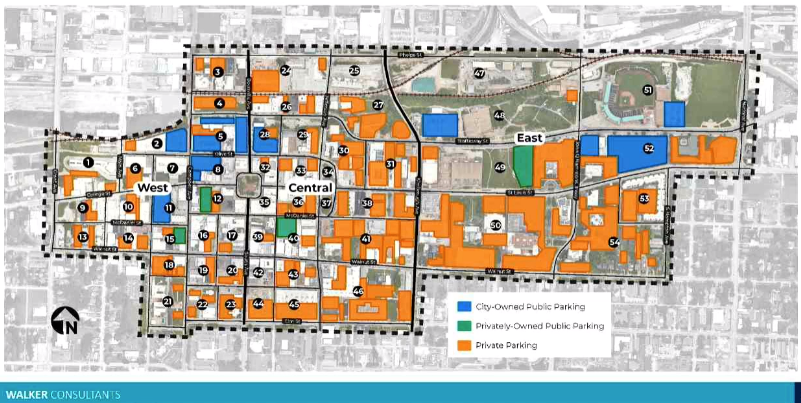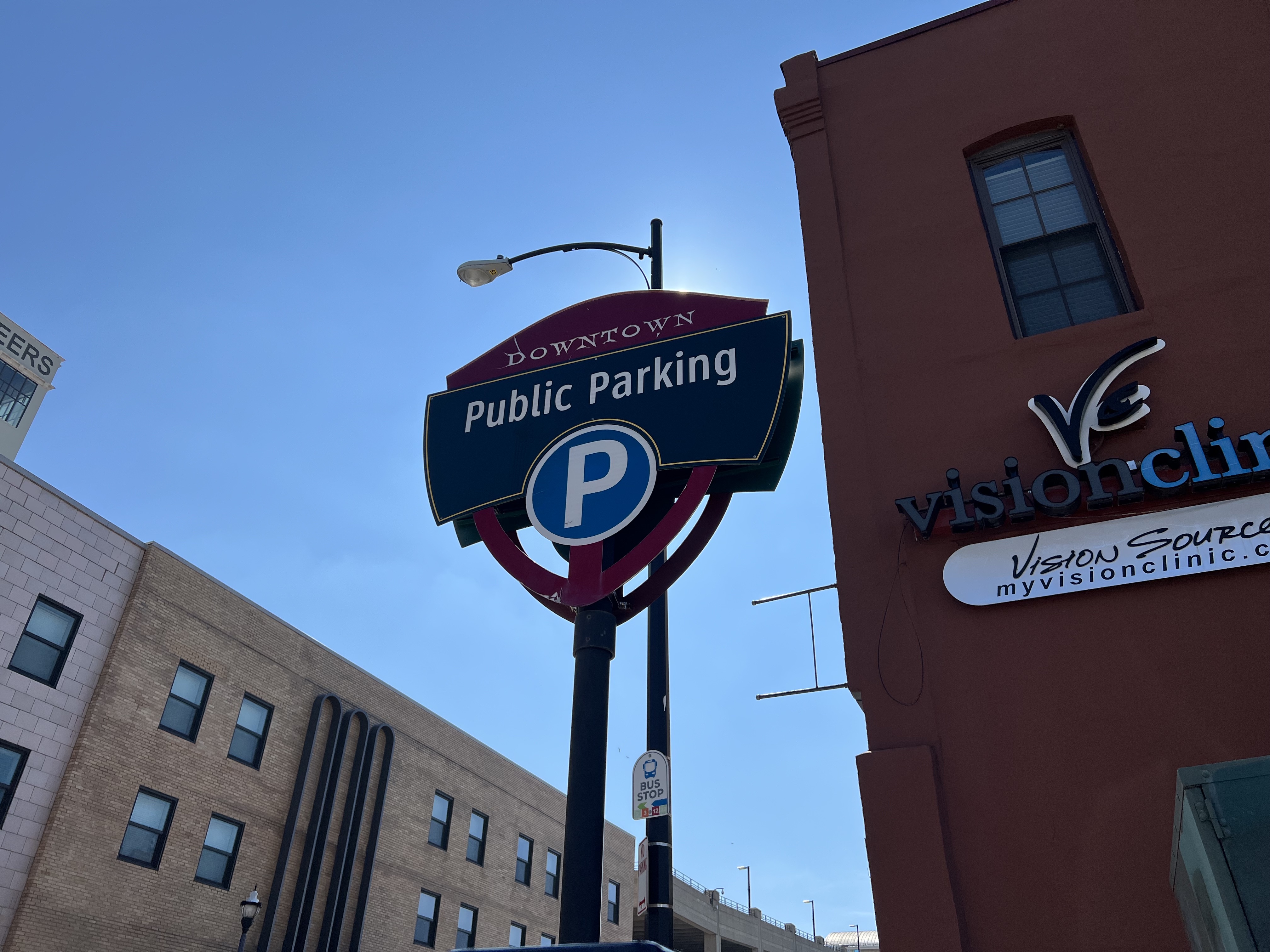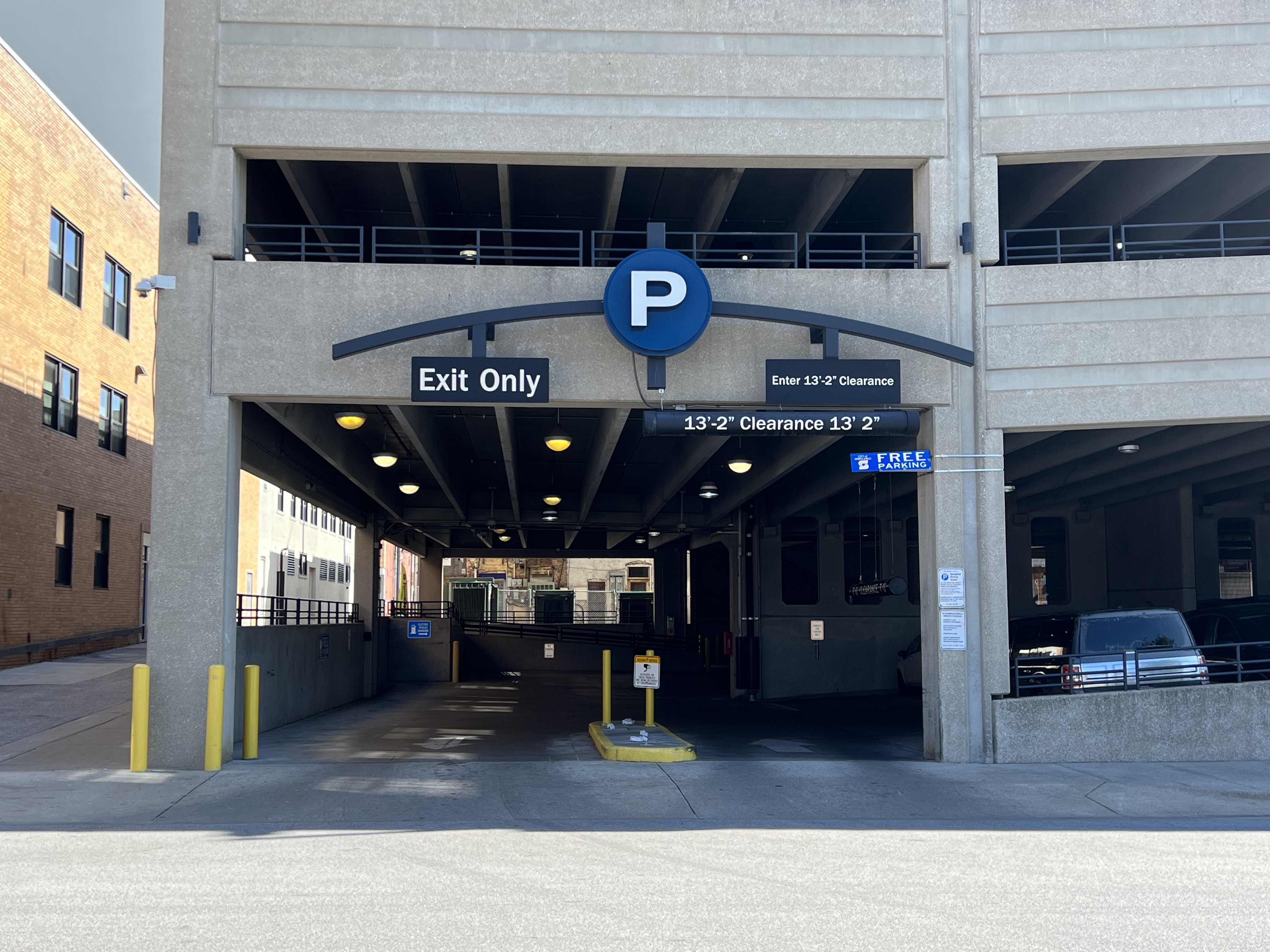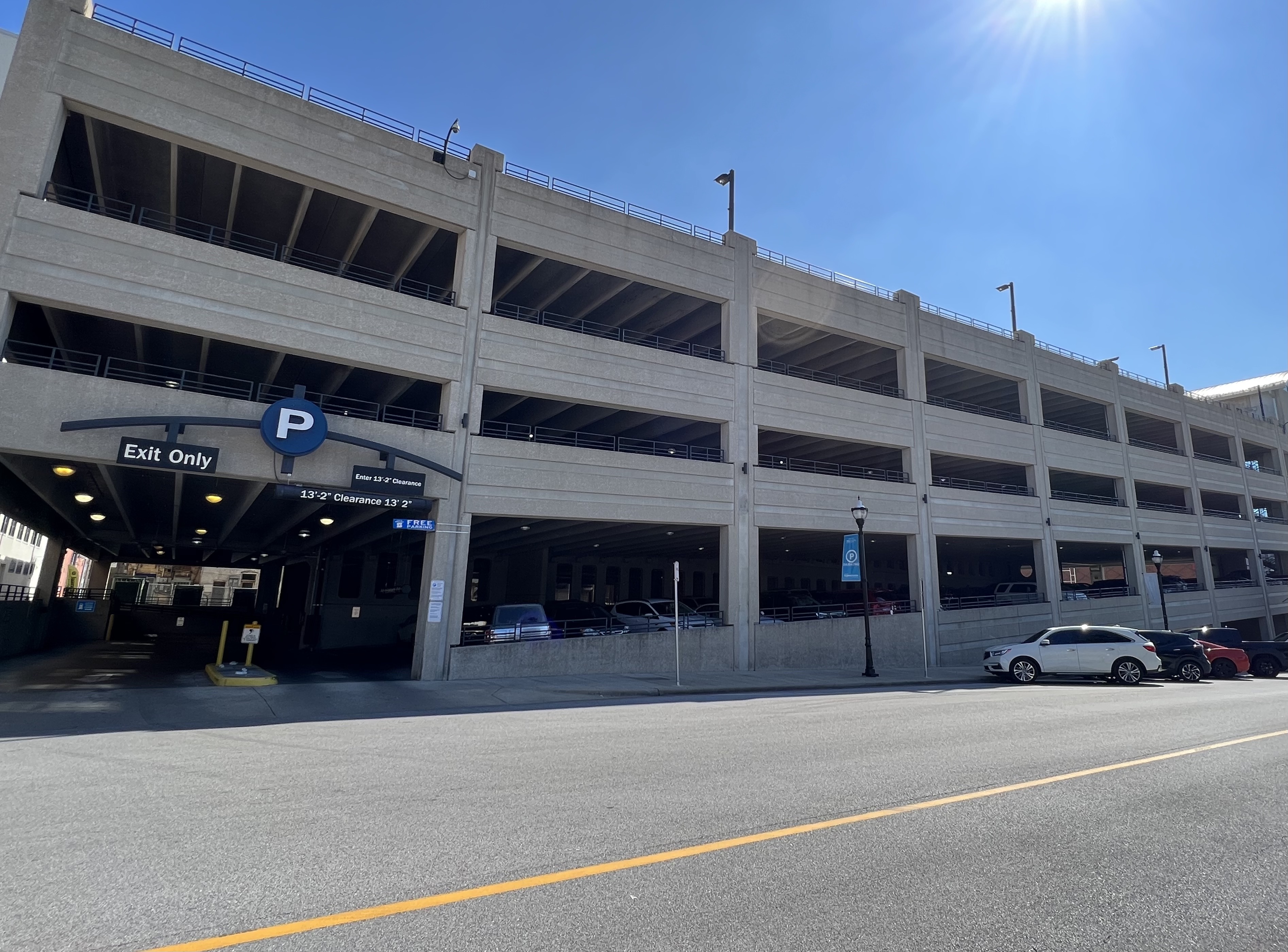Even though there is plenty of parking in downtown Springfield, all within a relatively short walking distance of most establishments, problems remain. The Springfield City Council heard recommendations on how to address these problems at its Aug. 15 study session.
Data compiled by Walker Consultants and Bartlett and West, as a part of a downtown parking study, was presented to council members in order to identify issues — both real and perceived — and potential solutions.
Public perception and concerns with parking and the lack of enforcement of parking regulations contribute to the problem, despite plentiful spaces — both public and private — across downtown Springfield. It can be addressed through improved signage and visibility indicating parking access, enhanced safety features and collaboration between the city government and property owners, in addition to other measures.
“Improving as much as possible with the physical limitations of your downtown, and people's willingness to walk — just making those other options known can go a long way,” said Eric Haggett, the project manager and director of planning for Walker Consultants.
Low occupancy parking lots, illegally parked cars plague downtown

With more than 11,000 spaces in the study area, Haggett said downtown Springfield has “quite a supply of parking,” with roughly 62 percent of spaces being private off-street, 30 percent public off-street and 8 percent on-street parking.
Even with a minority of parking downtown being public, the lots still provide more than enough spaces for vehicles, with a peak weekday occupancy of about 30 percent, compared to 22 percent on the weekend.
On-street parking, while not imperative to a successful business or a vibrant downtown, makes up a relatively small amount of the spaces available. On-street parking plays a major contributor to public perception and enforcement of parking requirements.
“There's only so much curb to go around in a city,” Haggett told council members. “As there's more density, there's more users that want that limited space. It's really context dependent on walking distances to a parking facility, I don't think it's critical that you have parking immediately out front, because if you did, then every restaurant would only be able to accommodate three cars or so at any given time.”

On-street parking is also abused by many, with at least 20 percent or more of vehicles parked illegally, having exceeded the posted time limits, and at least 18 percent or more of the spaces occupied by the same vehicle for at least five hours, as surveyed on a Tuesday and Wednesday in downtown Springfield. In addition, the study identified other forms of illegal parking.
While it may pose an inconvenience for some, off-street public parking lots and garages are within short walking distances, with much of downtown accessible in three minutes of walking or less. Most of the downtown property in the study area is within five minutes or less of walking to a public parking lot or garage.
Safety and visibility of public parking facilities is another major concern, resulting in people avoiding parking garages and lots because they may not be aware it is accessible to the public, or they feel more comfortable on a surface lot than in a garage.
Recommendations categorized by priority, cost

In order to address some of the challenges of parking downtown, the parking study includes about 40 recommendations, some of which the consultants say should be prioritized over others, and others more expensive than some.
Haggett previewed the, “most interesting, most impactful,” of the recommendations in his presentation to council members, explaining how different measures could be adopted in the immediate future, and more costly endeavors that the city could consider in the long-term:
Immediate advice:
- Establish a parking point person within the city’s current organizational structure;
- Create a parking page on the city’s website.
“From the top of the report, running to the end, we focused on internal governance and how parking is really managed and controlled within the city,” Haggett said.
That focus led them to recommend the city hire a parking manager who oversees different aspects of parking by addressing public concerns, considers the implementation of new parking measures and coordinates with enforcement and other relevant agencies.
In addition to urging the city government to add a page on its website with parking information, the city could also collaborate with digital wayfinding services like Google and Apple Maps for digital users to be able to navigate directly to a public parking facility.

Short-term advice:
- Outsource downtown parking enforcement duties to a professional third-party parking management firm;
- Acquire license plate recognition technology for use in parking enforcement;
- Identify potential locations for shared parking and work with interested property owners to implement shared parking agreements;
- Require parking supply/demand studies for new development and redevelopment projects;
- Redesignate all timed on-street parking spaces as two-hour parking;
- Remove time limits from on-street parking spaces on the edges of downtown;
- Install/modify parking directional signs at key decision points;
- Design and install entry signage on exterior of buildings to identify access points for pedestrians.
Increased enforcement is a major component of many of the recommendations, which could possibly be carried out by a third-party company. While it could stand to be a revenue stream to cover some of the costs associated with increased enforcement of parking regulations, Haggett said that it, “shouldn’t be a profit center,” and warned against heavy-handed enforcement.
“Just from a public perception perspective, and just, you know, a welcomingness in downtown, you don't want to be on everybody the second they violate…so there really is a balance between covering your costs and maybe making some revenue and not being overly aggressive and just making downtown feel unwelcoming,” Haggett said.
Additional and more consistent signage at various access points to public parking facilities could increase awareness and a sense of safety. The study also identified several aspects of time-limited parking that could be tweaked, including creating more consistency across on-street parking spaces in the short-term, and potentially extending enforcement hours in the mid-term.

Mid-term advice
- Extend enforcement of timed on-street parking in downtown to 7 p.m. or later;
- Replace all existing vehicular parking entry signage with a uniform public parking sign design;
- Add new interior signage including highlighted stairwells and entrances, pedestrian signage, overhead signs and specialty graphics;
- Develop a downtown signage and wayfinding master plan
- Evaluate and upgrade existing lighting systems in the city’s parking structures and surface parking lots.
Haggett said that lighting is ultimately the “No. 1” measure that could make people feel safer in parking facilities, but acknowledged that such a project could be expensive. He also encouraged the city to explore filling retail space in a parking garage with a government department or affiliated entity, open beyond typical business hours to contribute towards safety.

Long-term advice
- Enforce timed on-street parking in downtown on Saturdays;
- Identify opportunities to partner with private developers to add public parking capacity to large private developments.
While included in the recommendations report, metered parking is a low priority measure, according to Haggett. He said other regulations should be deployed before moving towards more paid parking, the implementation of which can be costly and receive pushback.
Haggett said that the parking study report is “very close” to completion, at which point the city can determine the who, how and when certain measures could be implemented, and how much they might cost.

